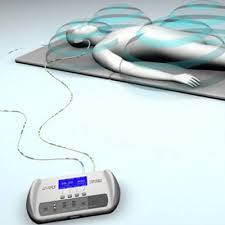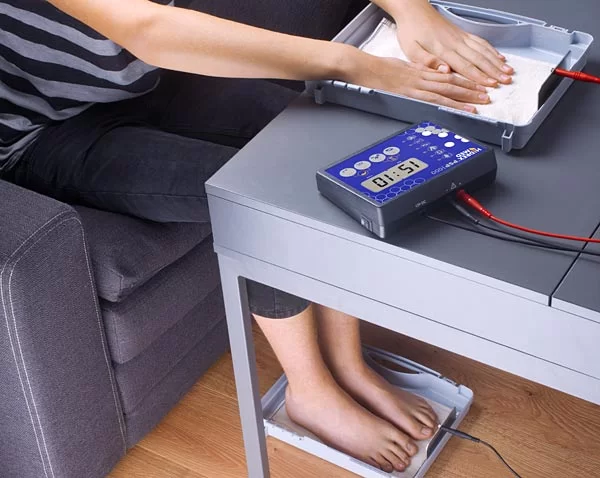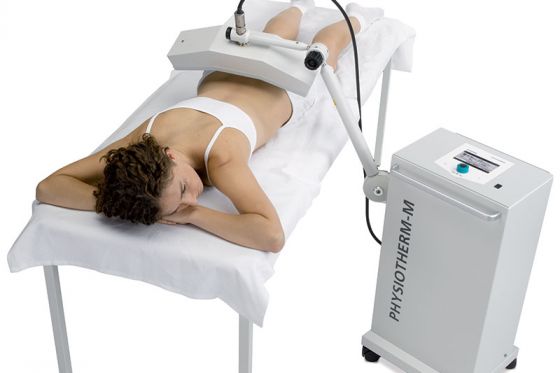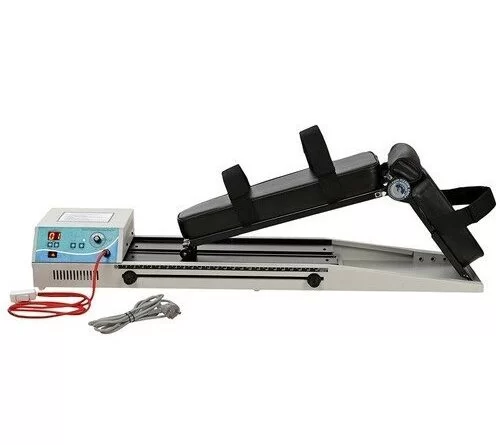SHOCK-WAVE THERAPY
Table of Contents
Definition :
Shock-wave therapy is a modality that is becoming more common in physiotherapy. Using much lower energy than in medical applications, shock-wave therapy, or extra-corporeal shock wave therapy (ESWT), is used in the treatment of many musculoskeletal conditions, primarily those involving connective tissues such as ligaments and tendons.
What is Shockwave Therapy?
Although it may have a very intimidating name, shockwave therapy is a modality that provides many benefits to clients suffering from injuries. Shock-wave therapy is a non-invasive therapeutic device that works by delivering acoustic waves to the site of injury. The machine uses kinetic energy to reach the target area via a small applicator at the head of the shock-wave therapy handle. This energy penetrates the skin sending a radial wave as deep as 7 cm into the body, with the highest pressure
felt at the surface of the body.
The machine works based on three settings: frequency, bars, and a number of shocks. Frequency, measured in Hertz (Hz), is the number of pulses per second, ranging from 1 – 15 Hz. While Bars are the power each pulse sends into the body, ranging from 1.5 – 5 Bars, with a higher number of bars penetrating deeper into the body. This depth can vary based on internal and external factors, such as body water content, transmitter head size, and quality of contact on the skin.
History of Extracorporeal Shock-wave Therapy
The clinical use of ESWT was first introduced into practice in 1982 for urologic conditions. The success of this technology in the treatment of urinary stones quickly made it a first-line, noninvasive, and effective method. Subsequently, ESWT was studied in orthopedics where is was identified that ESWT could loosen the cement in total hip arthroplasty revisions. Further, animal studies conducted in the 1980s revealed that ESWT could augment the bone-cement interface and also found an osteo-genic response and improve fracture healing [4][5]. While benefits in fracture healing have been shown with ESWT the majority of orthopedic research has focused
on upper and lower extremity tendinopathies, fascio-pathies, and soft tissue conditions.
Physiology of Shock-wave Therapy
Shockwaves are sound waves that have specific physical characteristics, including nonlinearity, high peak pressure followed by low tensile amplitude, short rise time, and short duration (10 ms). They have a single pulse, a wide frequency range (0-20 MHz), and a high-pressure amplitude (0-120 MPa)
These characteristics produce a positive and negative phase of shockwave. The positive phase produces direct mechanical forces, whereas the negative phase generates cavitation and gas bubbles that subsequently implode at high speeds, generating a second wave of shockwaves.
In comparison to ultrasound waves, the shockwave peak pressure is approximately 1000 times greater than the peak pressure of an ultrasound wave.
Mechanism of Action
The effects of ESWT treatment are unknown. The proposed mechanisms of action for ESWT include the following: promote neovascularization at the tendon-bone junction, stimulate proliferation of tenocytes and osteoprogenitor differentiation, increase leukocyte infiltration, and amplify growth factor and protein synthesis to stimulate collagen synthesis tissue remodeling.
What does Shock-wave Therapy treat?
Current research shows the efficacy of shockwave therapy in both acute and chronic injuries with most research surrounding musculoskeletal injuries affecting small, medium, and large-sized tissues.
Indication

- Lateral Epicondylitis


- Shoulder Tendinopathies

- Gluteus / Hamstring Tendinopathies

- Trigger Finger

- Rotator Cuff Injuries
*Orthopedic conditions commonly treated with shockwave therapy include:
- jumper’s knee (patellar tendinitis)
- tennis elbow (lateral epicondylitis)
- golfer’s elbow (medial epicondylitis)
- Achilles tendinitis
- bursitis
- chronic pain
- stress fractures (bone healing)
- Morton’s Neuroma
What to expect from Shock-wave Therapy?
Treatment with shockwave therapy is measured based on the total number of shocks received by the injured area. A typical session can last anywhere between 5 to 15 minutes, with a total number of shocks ranging from 1000 – 8000.
Effects of shockwave therapy last about 2 – 4 hours after the session
Side Effects of Shock-wave Therapy
- Minor pain/discomfort during and/or after the session
- Transient redness of treated skin
- Local swelling
- Local tenderness
- Potentially, minor hematomas (bruising)
- Potentially, headaches, migraines, and subsequent syncope
Always discuss previous reactions to shock-wave therapy if you’ve experienced it before, or inform your therapist of any reactions during and following your treatment.
Injuries treated with shockwave therapy can require any number of sessions before pain relief is felt (if any). Treatments must be at least 5 days apart from each other, due to normal body healing processes. Upon completion of treatment, normal activities can resume almost immediately.
Contraindications of Shock-wave Therapy
Shockwave therapy may not be for you if you:
- are pregnant
- are taking anti-coagulants or have blood clotting disorders
- have received steroidal treatment within 6 weeks of starting SWT
- are under 18 (certain injuries can still be treated, pending assessment)
- are under the influence of drugs or alcohol
- have a pacemaker
Shock-wave Therapy cannot be used in the following area:
- Tumours (benign or cancerous)
- Air-filled areas (i.e. lungs)
- Cartilage or small facet joints of the spinal column
- Metal implants
- Muscle tears
Any area with vasomotor impairment or decreased neural sensitivity/pain reception
Clinical Guidelines:
Extracorporeal shockwave therapy (ESWT) is primarily used in the treatment of common musculoskeletal conditions. These include both upper and lower extremity tendinopathies, greater trochanteric pain syndrome, medial tibial stress syndrome, patellar tendinopathy, plantar fasciopathy.
There is no standardized ESWT protocol for the treatment of musculoskeletal conditions.







Do your provide shock therapy treatment for healing broken bones. Patient is broken left arm bone which has not healed after bone grafting surgery.